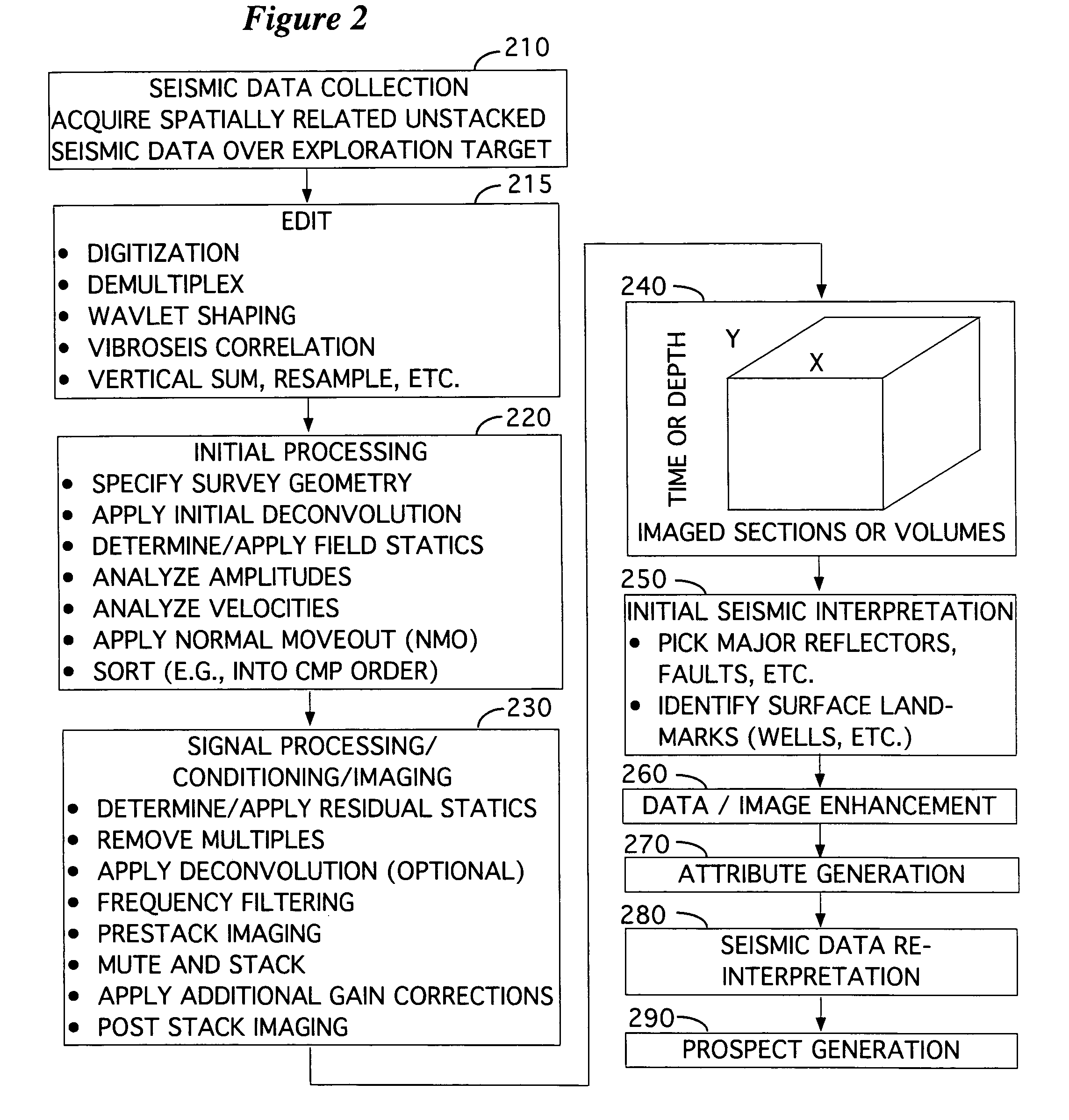Method of DMO calculation for use in seismic exploration
a technology of seismic exploration and dmo calculation, applied in the field of seismic exploration, can solve the problems of multiple identification and removal of seismic data, dry holes, and methods, and achieve the effects of improving the overall efficiency of the conventional srme process, increasing process efficiency, and increasing efficiency
- Summary
- Abstract
- Description
- Claims
- Application Information
AI Technical Summary
Benefits of technology
Problems solved by technology
Method used
Image
Examples
Embodiment Construction
[0032]While this invention is susceptible of being embodied in many different forms, there is shown in the drawings, and will herein be described hereinafter in detail, some specific embodiments of the instant invention. It should be understood, however, that the present disclosure is to be considered an exemplification of the principles of the invention and is not intended to limit the invention to the specific embodiments or algorithms so described.
GENERAL ENVIRONMENT OF THE INVENTION
[0033]FIG. 1 illustrates the general environment in which the instant invention would typically be used. Seismic data 110 are collected in the field (e.g., the data might be from a land-based survey, a marine survey, some combination of the two, etc.) over a subsurface target of potential economic importance and are typically sent thereafter to a processing center, although substantial processing can be done in the field if such is desired. In the processing center a variety of preparatory processes 1...
PUM
 Login to View More
Login to View More Abstract
Description
Claims
Application Information
 Login to View More
Login to View More - R&D
- Intellectual Property
- Life Sciences
- Materials
- Tech Scout
- Unparalleled Data Quality
- Higher Quality Content
- 60% Fewer Hallucinations
Browse by: Latest US Patents, China's latest patents, Technical Efficacy Thesaurus, Application Domain, Technology Topic, Popular Technical Reports.
© 2025 PatSnap. All rights reserved.Legal|Privacy policy|Modern Slavery Act Transparency Statement|Sitemap|About US| Contact US: help@patsnap.com



